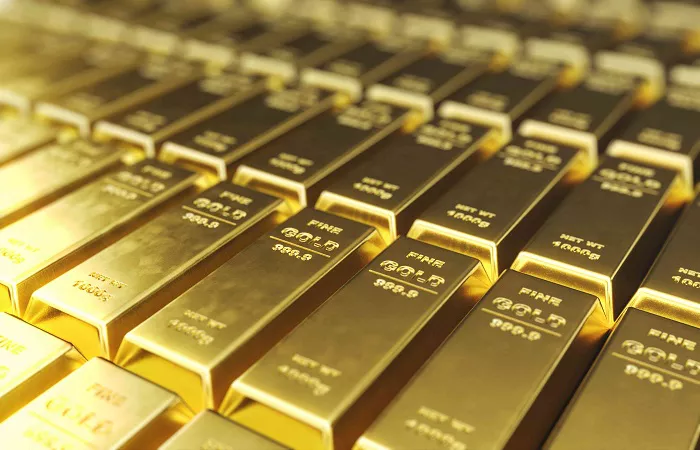Gold prices have surged dramatically, rising by more than 40% in the past year, with the price hitting record highs above $3,500 per ounce in April. This surge has been driven by a combination of geopolitical uncertainty, inflation fears, and a rising demand from central banks. However, with this steep climb, the big question for investors is whether the gold boom is sustainable or if a market correction is on the horizon.
Why Gold is Soaring
Several factors have contributed to gold’s meteoric rise. Geopolitical instability, particularly surrounding the U.S.-China trade tensions, the war in Ukraine, and the uncertainty of U.S. political actions under President Trump, has made gold attractive as a “safe haven” asset. Central banks have also been major buyers, accumulating gold reserves to shield themselves from the risks of holding U.S. dollars or Euros. Additionally, the rise of Exchange Traded Funds (ETFs) focused on gold has made it easier for institutional investors to gain exposure to the precious metal, further inflating demand.
Gold’s value is also linked to its scarcity. The total amount of gold mined throughout history is limited, and the annual production is relatively small, making it less prone to fluctuations in supply compared to other assets. Unlike stocks or bonds, gold doesn’t pay dividends or offer income, but it acts as an insurance policy against inflation and economic crises, as its supply is finite and it cannot be “printed” like paper money.
But, Is It Safe for Investors?
Gold has a reputation as a stable asset, but it is not immune to volatility. History has shown that sharp rises in gold prices can be followed by significant corrections. For instance, after hitting a high of $850 per ounce in 1980, the price of gold dropped by more than 65% within a few years. Similarly, after its 2011 peak, gold prices plummeted by 18% within just a few months.
Experts have mixed opinions on whether the current surge will continue. Some analysts believe that gold could climb even higher in the short-term, especially if geopolitical tensions persist or inflationary pressures worsen. For example, Goldman Sachs forecasts that gold could reach $3,700 per ounce by the end of 2025, potentially even hitting $4,000 by mid-2026. The size of the gold market is much smaller compared to the stock or bond markets, meaning that even small movements of money into gold could have a substantial impact on its price.
The Risk of a Bubble
On the other hand, some warn that the gold price could be in a bubble. The rapid ascent in prices may be unsustainable, and gold could experience a significant drop once the factors driving the price higher—such as the Trump administration’s trade policies or fears of inflation—subside. Industry experts like Jon Mills from Morningstar have even predicted that gold could drop to $1,820 per ounce in the coming years due to factors such as increased gold production and reduced central bank buying.
For investors, the fear is that they could be entering the market at or near the peak, hoping to make substantial profits, only to face losses when the bubble bursts. Historically, gold’s price has been volatile, and recent speculations around its potential upside make the market even more unpredictable.
What Should Investors Do?
Experts advise that investors approach gold cautiously and as part of a diversified portfolio. While gold can provide a hedge against economic downturns and inflation, it is not a guaranteed path to wealth. As Louise Street from the World Gold Council puts it, the conditions that have led to the current surge in gold prices may not last forever. Economic and geopolitical factors that drive demand could shift, causing the price of gold to drop suddenly.
In summary, while gold offers an attractive, stable asset class during times of uncertainty, its price volatility means it’s not without risk. Investors should be aware of the potential for significant price corrections and should avoid putting all their money into gold. Instead, it should form just one part of a broader, diversified investment strategy to mitigate risk. The golden question remains: Is the gold rush a long-term trend or a fleeting bubble waiting to burst?
Related topics:
- India Surpasses China in Gold Purchases, Buying 51% More in Three Months
- Qilu Bank Enhances Support for Small Businesses with Innovative Financial Tools
- Bitcoin Poised for a Surge Amid Gold’s Delivery Delays, Expert Claims


